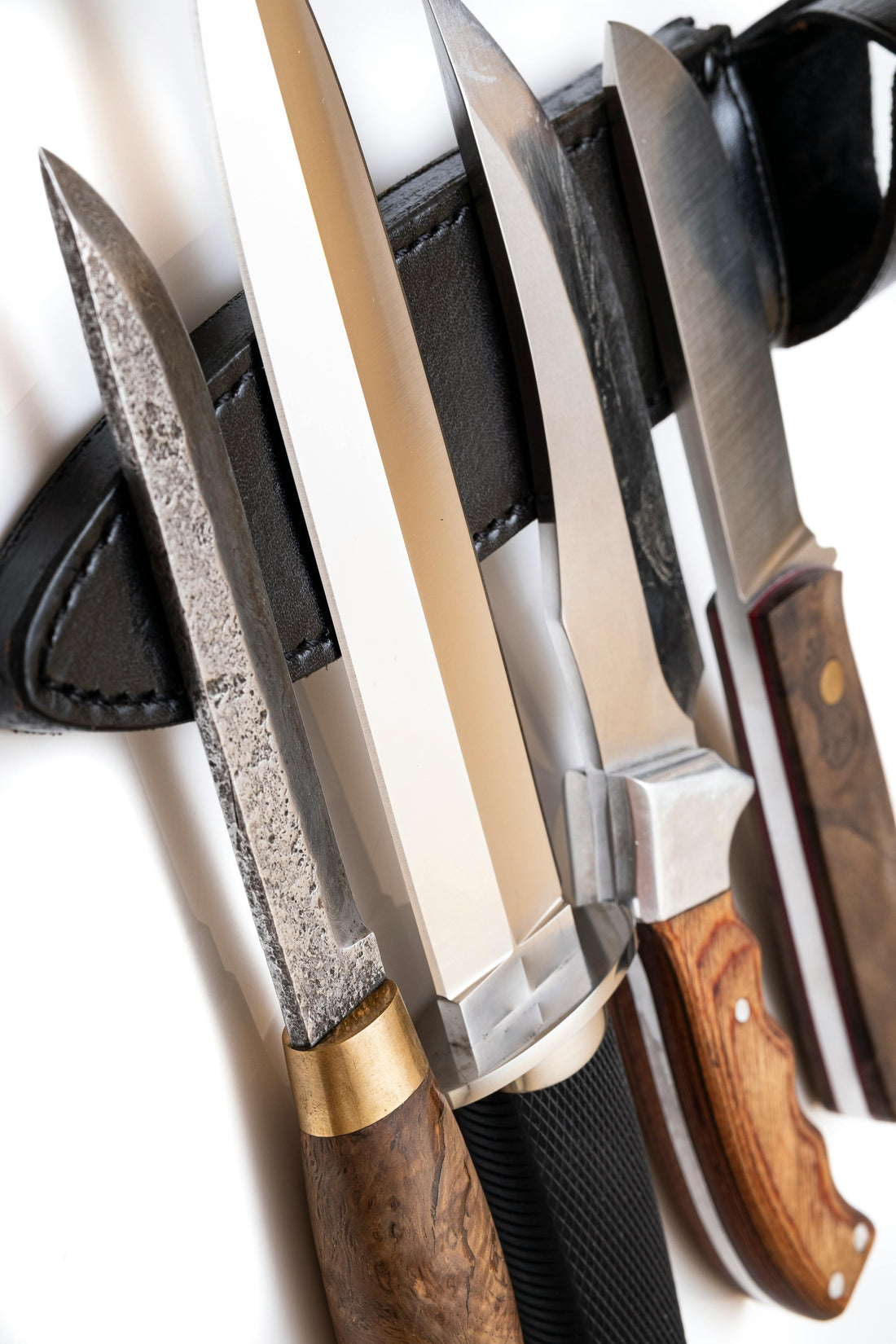
How to Keep Your Kitchen Knives Razor Sharp at Home
Share
A dull knife is not only frustrating to use, but it’s also unsafe. Most kitchen accidents happen when people apply extra force on a blunt blade, which can slip and cause injuries. On the other hand, a razor-sharp knife glides through food effortlessly, making cooking more enjoyable and precise. In this comprehensive guide, we’ll explore how to keep your kitchen knives razor sharp at home, covering everything from proper sharpening methods to storage, maintenance, and common mistakes to avoid.
If you don’t have the right tools or skills, consider professional help. Services like Cutting Edge Mobile Knife Sharpening provide expert sharpening at your home or via mail-in service, ensuring perfect edges every time.
Why Sharp Knives Matter
Safer Cooking
Sharp knives require less force, reducing the risk of slipping and accidents.
Better Food Preparation
A sharp knife cuts cleanly, preserving the texture of ingredients. Whether slicing tomatoes or filleting fish, sharpness ensures precision.
Saves Time
No more sawing through vegetables or meat—sharp knives speed up cooking significantly.
How to Test Knife Sharpness at Home
Before sharpening, test your knife:
-
Paper Test: Hold a sheet of paper upright and slice downward. A sharp knife cuts smoothly.
-
Tomato Test: Try slicing a ripe tomato. A dull knife will crush rather than slice.
-
Arm Hair Test: Carefully see if the blade shaves hair from your arm (optional and requires caution).
If your knife fails these tests, it’s time to sharpen.
Tools for Keeping Knives Sharp
1. Honing Rod (Sharpening Steel)
-
Realigns the blade’s edge but doesn’t remove material.
-
Should be used frequently—ideally every time you cook.
-
Available in steel, ceramic, and diamond-coated options.
2. Whetstone (Sharpening Stone)
-
Offers the best control for sharpening.
-
Comes in different grit levels: coarse (400–1000) for dull blades, medium (1000–3000) for regular sharpening, and fine (4000–8000) for polishing.
3. Manual or Electric Sharpeners
-
Great for quick results.
-
Electric sharpeners are easy but can remove more metal than necessary.
-
Manual pull-through sharpeners are safer for beginners.
4. Professional Services
-
For expensive knives, professional sharpening ensures the correct angle and preserves blade life. You can try mail-in knife sharpening services if you can’t find a local sharpener.
Step-by-Step: How to Sharpen Knives with a Whetstone
-
Soak the Whetstone (10–15 minutes for water stones).
-
Set the Angle: Typically 15–20° for kitchen knives.
-
Sharpen One Side: Glide the knife across the stone in smooth strokes.
-
Flip and Repeat: Sharpen the other side evenly.
-
Polish with Fine Grit: Use higher grit for a razor finish.
-
Rinse and Dry: Prevent rust by drying thoroughly.
How to Hone Your Knife Properly
-
Hold the honing rod vertically with the tip on a cutting board.
-
Place the knife at a 15–20° angle.
-
Swipe the blade from heel to tip across the rod.
-
Repeat 5–10 times on each side.
Honing doesn’t replace sharpening but helps maintain sharpness between sharpening sessions.
Storing Knives the Right Way
Improper storage dulls blades quickly. Here are safe options:
-
Magnetic Knife Strips: Keep blades accessible and safe.
-
Knife Blocks: Classic choice, but ensure they’re clean and dry.
-
Blade Guards/Sheaths: Perfect for drawers.
-
Drawer Inserts: Keep knives separated to prevent chipping.
Knife Care Tips to Prolong Sharpness
-
Use the Right Cutting Board: Wood and plastic boards are gentle on knives. Avoid glass or marble.
-
Hand Wash Only: Never put knives in the dishwasher; heat and detergent damage blades.
-
Dry Immediately: Prevents rust and corrosion.
-
Avoid Cutting Hard Items: Bones, frozen foods, or shells can chip edges.
Common Knife Sharpening Mistakes
-
Using the Wrong Angle: Inconsistent angles lead to uneven edges.
-
Over-Sharpening: Removing too much steel reduces knife lifespan.
-
Skipping Honing: Without honing, knives dull faster.
-
Improper Storage: Tossing knives in drawers damages the edge.
When to Use Professional Knife Sharpening Services
Even with the best care, home sharpening may not always deliver perfect results. Consider professional sharpening if:
-
Your knives are expensive and need precision.
-
You lack proper sharpening tools.
-
You want consistent, razor-sharp results.
If you’re in the Bay Area, Cutting Edge Mobile Knife Sharpening can visit your home or you can use their mail-in service for hassle-free sharpening.
Final Thoughts
Keeping your kitchen knives razor sharp at home is a mix of regular maintenance, proper sharpening, and correct storage. By using the right tools, honing regularly, and avoiding common mistakes, you’ll enjoy safer, faster, and more enjoyable cooking.
And when in doubt, trust the professionals—services like Cutting Edge Mobile Knife Sharpening ensure your knives remain in peak condition for years to come.
